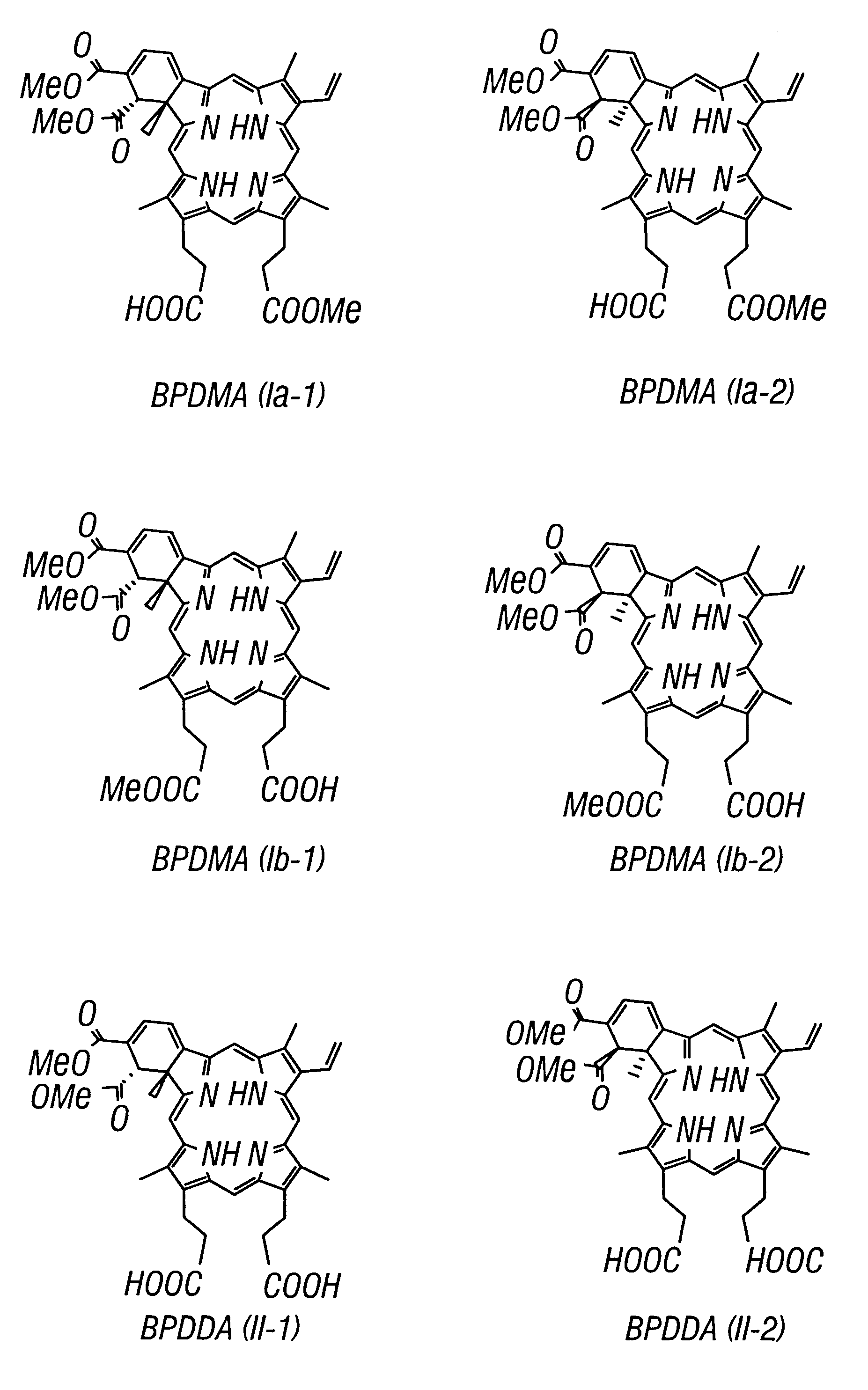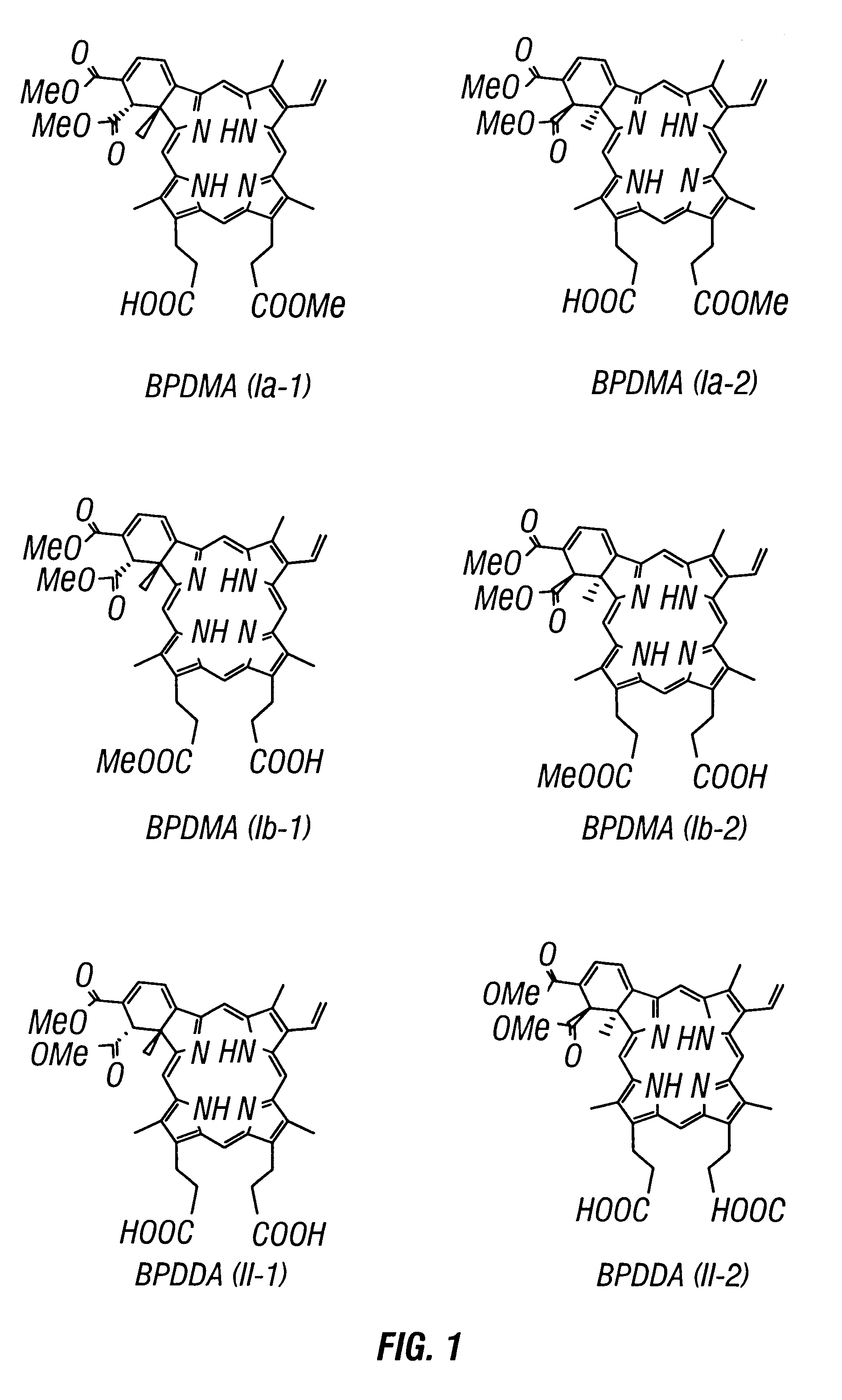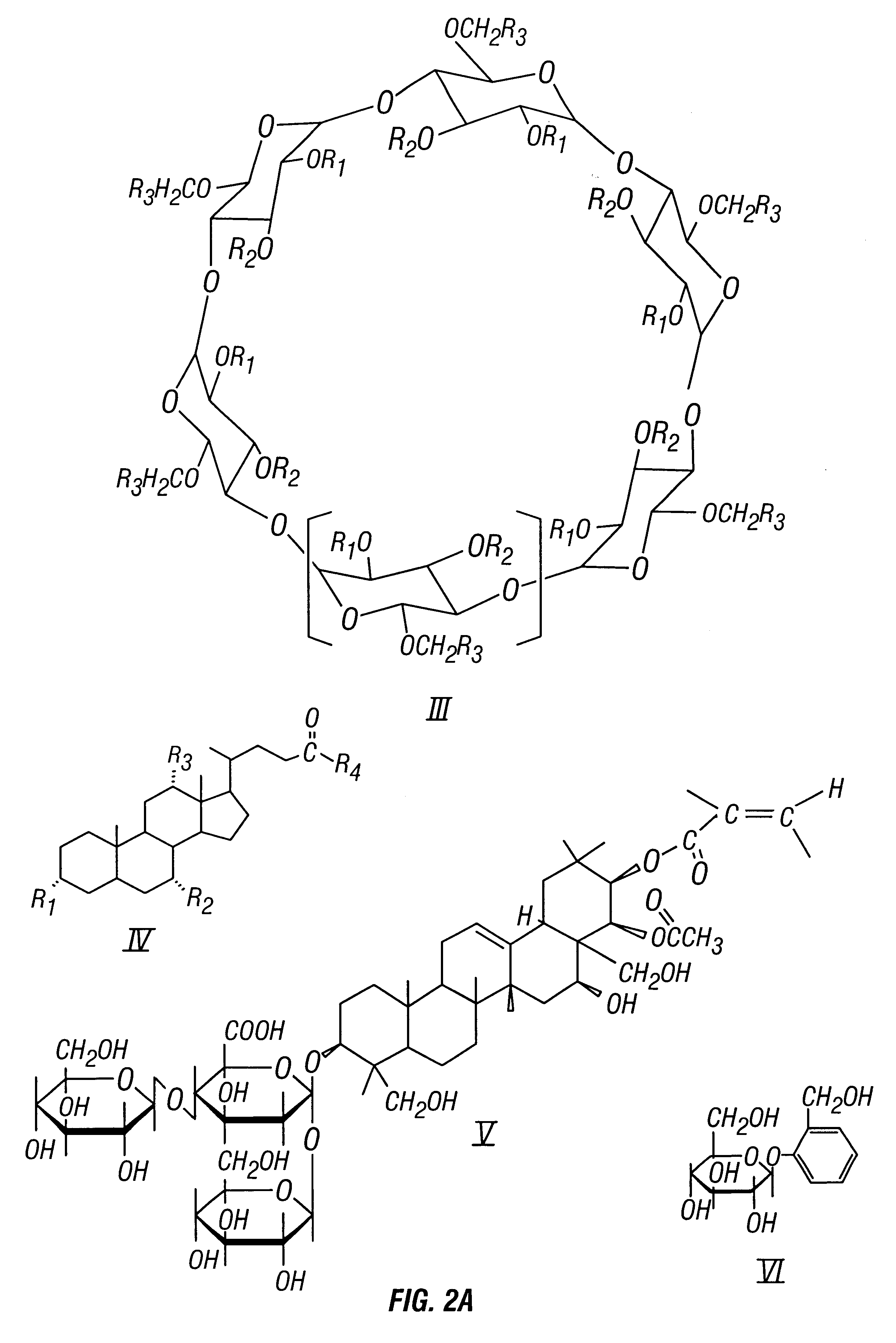Chiral separation of benzoporphyrin derivative mono-and di-acids by laser-induced fluorescence capillary electrophoresis
a technology of laser-induced fluorescence and benzoporphyrin, which is applied in the field of photodynamic therapy, can solve the problems of weak inner capillary wall adsorption, increased clogging, and reduced separation efficiency, and achieves the effects of improving detection and hence separation of stereoisomers, facilitating the separation of bpd enantiomers, and facilitating the separation of peptides
- Summary
- Abstract
- Description
- Claims
- Application Information
AI Technical Summary
Benefits of technology
Problems solved by technology
Method used
Image
Examples
example 2
CE Separation Procedures
The instrument was programmed to rinse the capillary at high pressure with 0.2 M NaOH for 5 min, pure water for 5 min. and then the separation buffer for 3 min. Samples were then introduced by a +10 KV electrokinetic injection for 2.0 sec. The separation was conducted in a constant-voltage mode by applying +20 KV across the ends of the capillary with normal polarity. The laser excitation wavelength was 488 nm and the fluorescence detection was monitored at 694 nm (10 nm, 1.0 inch band bass filter). The detector cell window was made by removing the polyimide coating on the capillary. The temperature of the capillary was held at 20.degree. C. Data was collected at 5 Hz. Between runs, the capillary was cleaned and equilibrated with successive 5 min rinses of 1.0 M NaOH and pure water.
example 3
Separation of BPD-MA from its liposomal formulation
Into a 25 mL bottle containing liposomally formulated BPD-MA (25 mg) was added 12.5 mL of H.sub.2 O. After stirring, it was stored in the dark (below 0.degree. C.) until use. A sample of this stock solution (5.0 .mu.l) was added to DMSO (950 .mu.l). The solution was stirred well and centrifuged for 5 minutes and filtered using a 0.22 .mu.m solvent filter and then stored in the dark (4.degree. C.) until use. 12.5 .mu.l of this solution (2.0 mg mL.sup.-1) was added to 25% acetonitrile / water and stirred well. The solution was then transferred into Sep-Pak cartridge and rinsed with 25% acetonitrile / water three times. The Sep-Pack was eluted with methanol (5.times.1.0 mL). The elutes were combined and evaporated under a nitrogen stream and the precipitate was dissolved in DMSO (5.0 mL), filtered using a 0.22 .mu.m filter, and stored in the dark at 4.degree. C.
All references cited hereinabove and below are hereby incorporated by reference...
PUM
| Property | Measurement | Unit |
|---|---|---|
| capillary inner diameter | aaaaa | aaaaa |
| capillary length | aaaaa | aaaaa |
| capillary length | aaaaa | aaaaa |
Abstract
Description
Claims
Application Information
 Login to View More
Login to View More - R&D
- Intellectual Property
- Life Sciences
- Materials
- Tech Scout
- Unparalleled Data Quality
- Higher Quality Content
- 60% Fewer Hallucinations
Browse by: Latest US Patents, China's latest patents, Technical Efficacy Thesaurus, Application Domain, Technology Topic, Popular Technical Reports.
© 2025 PatSnap. All rights reserved.Legal|Privacy policy|Modern Slavery Act Transparency Statement|Sitemap|About US| Contact US: help@patsnap.com



